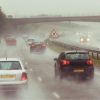
Drink-driving kills hundreds of people on UK roads each year. Among those killed are passengers, pedestrians and children: all paying the ultimate price for the poor decisions somebody else made.
1 drink could put you over the legal blood alcohol limit – you can’t be certain, so stay safe and stick to #NoneForTheRoad.
You’re 6x more likely to be involved in a fatal crash – if you have 50-80 mg alcohol per 100ml blood, compared to 0ml.
Minimum 12-month ban if you’re caught over the limit behind the wheel.
Roughly 250 people are killed by drink-drivers on Great Britain’s roads every year, a figure that’s barely fallen since 2010.
“It’s hard to believe that what seemed like such a small action at the time has had such catastrophic and life-changing consequences, which I will have to live with for the rest of my days.”
Read Jane’s story here.
“I had parked my car and gone into my house. When I came back out, I noticed a police car blocking my driveway. I stepped forward to speak to the policeman, who immediately asked me to take a breathalyser test. I failed the test, and my whole life flashed before me.”
Read Depesh’s story here.
“Education needs to be upfront… I knew I was over the limit when I got behind the wheel but I didn’t understand the implications of driving somewhere I considered to be off road.”
Read Andy’s story here.
Drink-Driving Q&A
What are the laws on drink-driving?
There are strict limits on the amount of alcohol a driver is allowed to have in their system. It varies between Scotland and the rest of the UK, but the guidance is clear:
- 35 Microgrammes per 100 millilitres of breath, (or 22 in Scotland)
- 80 Milligrammes per 100 millilitres of blood, (or 50 in Scotland)
- 107 Milligrammes per 100 millilitres of urine, (or 67 in Scotland)
How many drinks am I allowed?
The amount of alcohol it takes to be over the drink-drive limit varies from person to person, based on several factors including their weight, age, gender and metabolism, as well as the type and amount of alcohol they’re drinking. It can also change depending on their levels of hydration and fatigue. So there is no foolproof way of drinking alcohol and staying under the drink-drive limit, so it is always best to have #NoneForTheRoad.
Am I safe to drive the morning after drinking?
This is a common question many people ask themselves, but one with no definite answer. That said, it’s still important to know roughly how long after drinking it’s safe to drive. So, if you are planning on drinking alcohol and driving the next day, using an online calculator like the one provided here (for England and Wales) and here (for Scotland) can help you to work this out.
Do I need to be driving to be convicted?
No! Under the Road Traffic Act 1988, anyone who is caught ‘drunk in charge of a vehicle’ could be convicted for drink-driving. This includes having your keys on you and retrieving personal belongings from your car – even when you haven’t turned on the engine. Remove all reasonable doubt and steer well clear of your vehicle if you’re drinking.
But drink driving isn’t an issue any more, is it?
Yes! In 2018 there were 8,680 casualties caused by drink-driving in Great Britain. And while this number has reduced significantly over the last few decades, down from more than 30,000 in 1979, any casualty is one too many. More still needs to be done to ensure drink-driving no longer happens on our roads.
IAM RoadSmart can offer training to maximise awareness in commercial drivers. Fleets represent an enormous portion of the drivers on UK roads, so keeping your fleet drivers educated could be a huge potential boost to our general road safety.
Education could be in car one-to-one training, virtual classroom learning, or online e-learning – get in touch to learn how we can help your organisation.





